-
Sandia to show Mine Rescue Robot at 2013 DARPA Robotics Challenge
Engineers from Sandia National Laboratories will demonstrate real-world robotics successes at the DARPA Robotics Challenge Trials 2013 Expo this week (20-21 December) in Florida. The challenge is focused on human-scaled robots that assist in humanitarian aid and disaster response. Sandia engineers will demonstrate the Gemini Scout Mine Rescue Robot, which was designed to overcome dangers lurking in a mining accident: poisonous gases, flooded tunnels, explosive vapors, and unstable walls and roofs. Such potentially deadly conditions and unknown obstacles can slow rescue efforts to a frustrating pace.
-
-
Lawmakers: Old plastic gun law has not kept pace with technology
The U.S. House of Representativesvoted last Tuesday to renew the 25-year old Undetectable Firearms Actwhich prohibits firearms that can evade metal detectors and X-ray machines. Law enforcement agencies say that developments in 3D printing make the law insufficient, and lawmakers who proposed amending the Act say that the only way to make such guns detectable is to require that at least one component of the firing mechanism in a plastic gun contain enough metal to be detectable in a magnetometer — and that that component be undetachable. The NRA opposes these requirements, saying that they would infringe on the Second Amendment rights of citizens.
-
-
Seventeen teams to compete in DARPA Robotics Challenge Trials
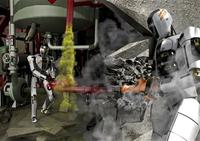
Four teams that built full robot hardware and software systems using their own funds qualified to join thirteen other teams to compete in the Defense Advanced Research Projects Agency (DARPA) Robotics Challenge (DRC) Trials. The event will take place 20-21 December at the Homestead-Miami Speedway in Homestead, Florida, where spectators can observe as the robots are tested on the capabilities that would enable them to provide assistance in future natural and man-made disasters.
-
-
Standardized performance tests for emergency response robots
Seventeen teams will be directing their emergency-response robots to perform eight basic tasks which were drawn from the Fukushima Daiichi response and then converted into standardized tests by researchers at the National Institute of Standards and Technology (NIST). A year later, the capabilities of robots that qualify in this year’s trials will be tested in a more realistic disaster scenario. In the winner-take-all finals, robots will perform all eight challenges consecutively. NIST engineers have been at the forefront of using standardized performance testing for emergency response robots used in bomb-response and for urban search-and-rescue operations. Since 2005, fifteen NIST tests have been adopted as standards by ASTM International, and about forty more are under various stages of development or review.
-
-
Earthquake early warning? There’s an app for that
Researchers from the University of California have unveiled a smartphone app designed to provide users an early warning of approaching earthquakes. Based on the proximity of the user to the earthquake’s epicenter, the app will provide alerts of between a few seconds and one minute before a tremor hits.
-
-
Better earthquake early-warning system
Geophysicists have developed a new way of calculating the magnitude of an imminent earthquake by making better use of measurements of the compression waves produced early in the event. They say that the technique could be used to create a better early-warning system for earthquakes that could be used worldwide.
-
-
Solar-powered, fabric-woven battery for “wearable electronics”
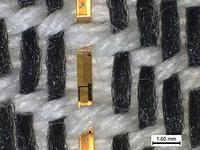
Though some people already seem inseparable from their smartphones, even more convenient, wearable, solar-powered electronics could be on the way soon, woven into clothing fibers or incorporated into watchbands. This novel battery development could usher in a new era of “wearable electronics.”
-
-
Smart software fighting fire with #fire
Australia’s key disaster management agencies have joined forces to tackle the problem of how to access and interpret information gathered during bushfires and other natural disasters to help emergency services save lives and property.
-
-
New drone to monitor radiation following nuclear disasters
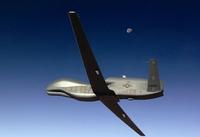
Researchers have unveiled a large semi-autonomous drone called the ARM system which could be used to provide visual and thermal monitoring of radiation after a release of nuclear material. The system was developed in response to requirements for radiation monitoring in event of the release of radioactive materials.
-
-
Forecasting long-lived wildfires
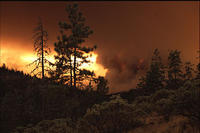
Scientists have developed a new computer modeling technique that offers the promise, for the first time, of producing continually updated daylong predictions of wildfire growth throughout the lifetime of long-lived blazes. The technique combines cutting-edge simulations portraying the interaction of weather and fire behavior with newly available satellite observations of active wildfires.
-
-
Insects’ way of flying inspires design of tiny flying robots
Researchers have identified some of the underlying physics that may explain how insects can so quickly recover from a stall in midflight — unlike conventional fixed wing aircraft, where a stalled state often leads to a crash landing. The analysis improves the understanding of how insects fly and informs the design of small flying robots built for intelligence gathering, surveillance, search-and-rescue, and other purposes.
-
-
Philippines prepares for worse disasters to come
On average, the Philippines experiences about twenty typhoons a year, including three super-typhoons and many incidents of flooding, drought, earthquakes, tremors, and occasional volcanic eruptions, making the country one of the most naturally disaster-prone areas in the world. Filipino government agencies, with the help of international disaster and relief agencies, have created new strategies for disaster preparedness, response, and mitigation which may well have potential applications in other parts of the world. As the impact of climate change grows more pronounced, the Philippines is becoming a hothouse for developing new methods and systems in the growing business of disaster relief.
-
-
Wildfire science returns to California’s Rim Fire
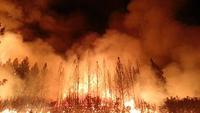
The challenging job of managing wildfires rests with other agencies, but the U.S. Geological Survey (USGS) provides the underlying science for sound land management decisions, before, during, and after wildfires. The USGS role studying natural hazards such as floods, landslides, earthquakes, and volcanoes is well known, but fewer people are aware of the USGS scientific work in major wildfire events, which are one of the most regular and sometimes most devastating natural hazards in the West.
-
-
Resources on disaster preparedness, resilience
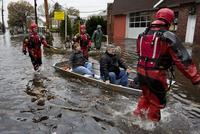
One year after Superstorm Sandy hit the eastern United States, local, state, and federal agencies as well as community groups and businesses are working to strengthen the U.S.s resilience to future disasters. A National Research Council (NRC) has issues a series of studies and reports, and has put together workshops and study groups, which should advance the national conversation on preparedness and resilience.
-
-
Helping first responders identify chemical, biological, and radiological agents
The U.S. Naval Research Laboratory (NRL) has expanded the reach and capabilities of its rapid urban plume modeling and hazard assessment system, CT-Analyst, by providing a commercial license to Valencia, California-based Safe Environment Engineering (SEE) for the fields of use of public safety, industrial safety and monitoring, and environmental monitoring. CT Analyst is a tool designed to provide first responders with fast and accurate predictions of chemical, biological, and radiological agent airborne transport in urban environments. CT Analyst will be integrated into the existing product line of SEE’s Lifeline MultiMeterViewer software suite.
-
More headlines
The long view
The Surprising Reasons Floods and Other Disasters Are Deadlier at Night
It’s not just that it’s dark and people are asleep. Urban sprawl, confirmation bias, and other factors can play a role.
Why Flash Flood Warnings Will Continue to Go Unheeded
Experts say local education and community support are key to conveying risk.
